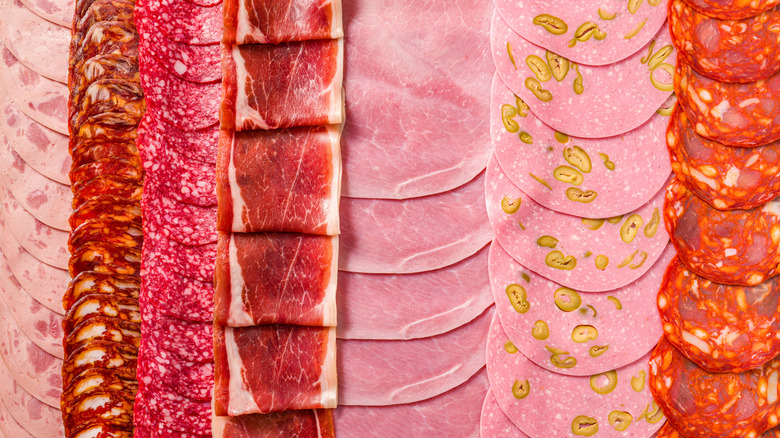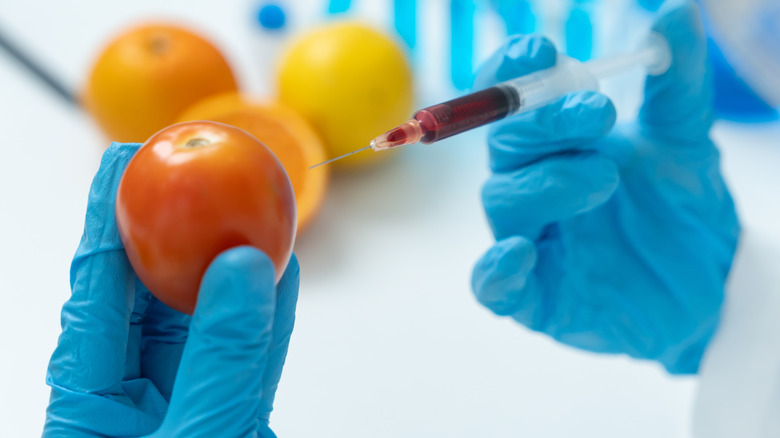Why You Might Want To Think Twice Before Microwaving Lunch Meat
It's no secret that America's food supply has grown poisonous over the last several decades. Instant coffee is getting called out for carcinogens, people are avoiding tea after discovering tea bags release billions of microplastics into the body, the list goes on. In case your dietary restrictions weren't getting small enough, turns out you also shouldn't be heating up lunch meat.
The problem is that lunch meat contains nitrates. Nitrates are naturally occurring, but are artificially introduced into lunch meats as a preservative. Nobody likes food waste, so what's the problem? Turns out, nitrates undergo a chemical transformation when heated which turns them into nitrosamines, a known carcinogen. That means, if you're placing your ham sandwich in the microwave during your lunch break, you are exposing your stomach and intestines to chemicals which increase the risk of developing cancer.
The good news is that you can eat that ham sandwich cold. The bad news is that you have to eat that sandwich cold. Personally, I can't stand cold lunch meat. The texture, the taste, it's simply not something I would voluntarily choose to eat outside of prison. But you can't argue against the convenience of a good source of protein with a long shelf life and low prep time, I'll give you that.
The American food supply is full of health risks
The fact that lunch meat becomes poisonous in this way when heated is a great example of how little we know about food. Modern food science and engineering is roughly a century old, and since then, we have become more adept and capable at manipulating our food, yet at the same time, downstream health implications have blossomed.
As I mentioned, nitrates are a naturally occurring chemical. They're most commonly found in leafy green vegetables like lettuce and spinach. Interestingly enough, when you heat green vegetables (either in the microwave or over a stove) they don't turn into nitrosamines and thus don't increase your risk of cancer. It's the same chemical in both spinach and roast beef, yet spinach is perfectly safe in this regard, while roast beef is not.
Unfortunately, there's only so much the individual consumer can do to avoid consuming microplastics and carcinogens. The best response is a healthy risk assessment and a conscientious effort to eat the best you can while acknowledging things will have to change on a larger scale if we really want to be free of these health risks. Will it kill you to eat a hot ham sandwich? Technically, yes. But more realistically, once in a while is probably okay. It's not like there are many alternatives free from their own complications.

